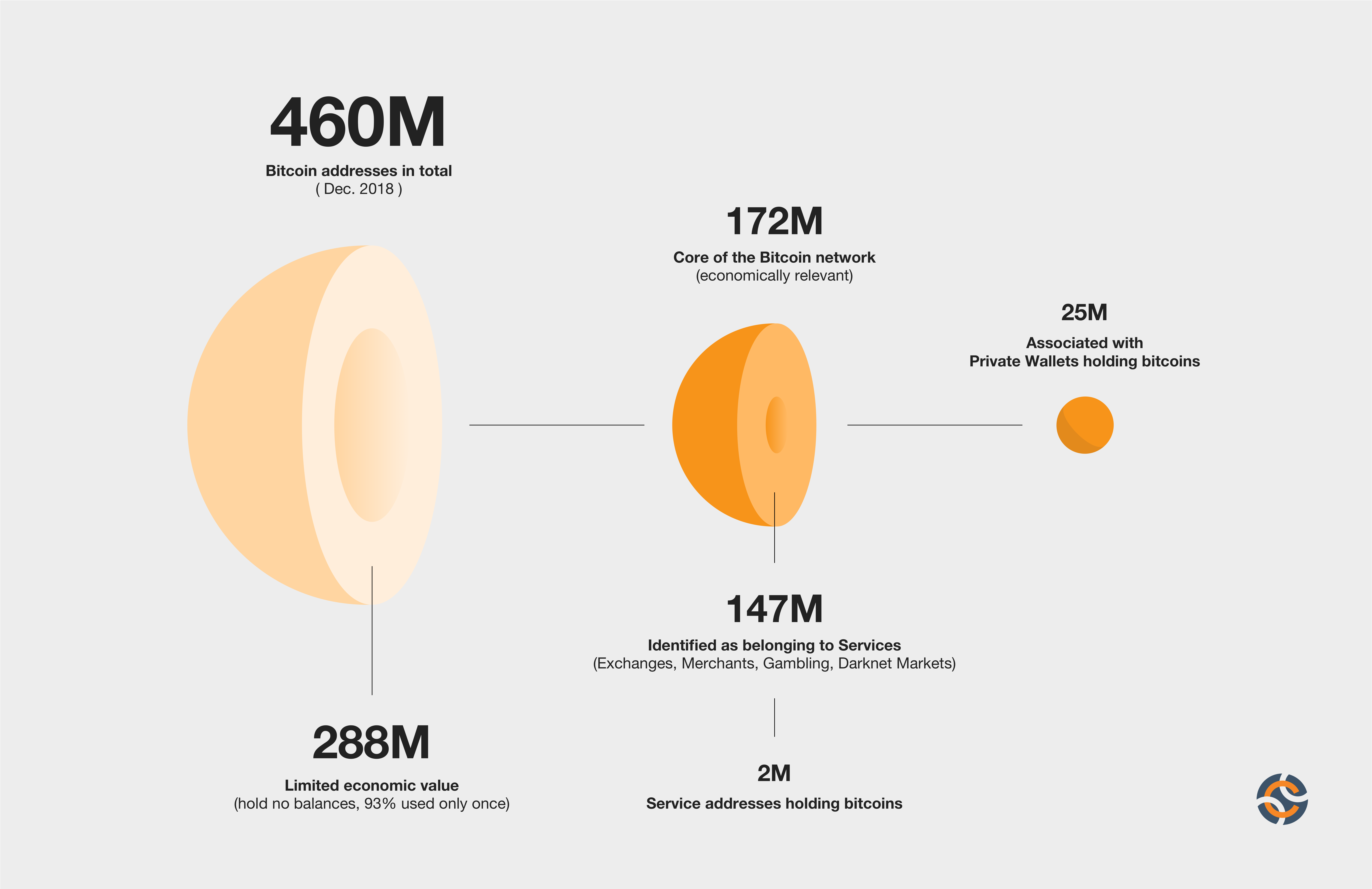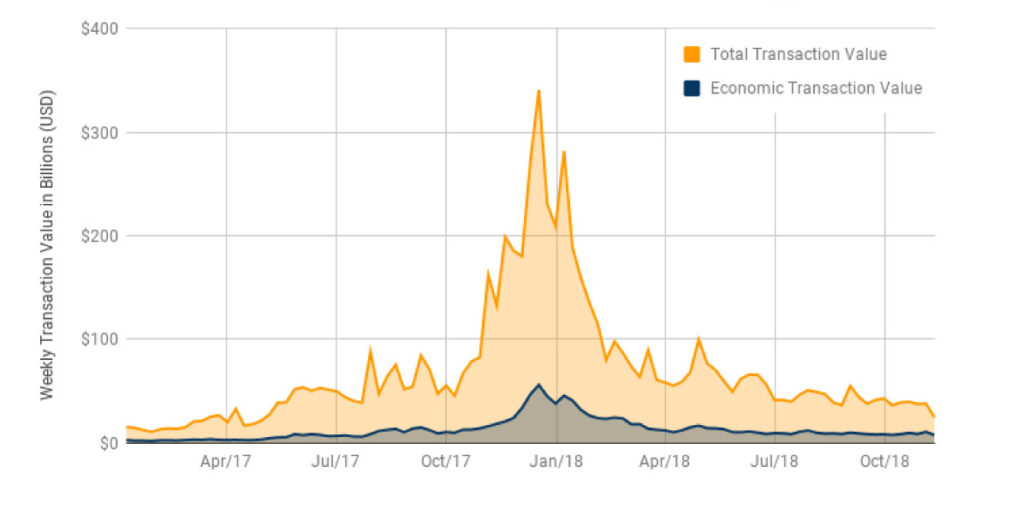The Bitcoin blockchain is vast and complex, forming a network of over 460 million cryptocurrency addresses. Yet only 37% of these are economically relevant. At Chainalysis, we have identified that 86% of these belong to a named service, while the remaining bitcoin addresses are largely used to facilitate payments. This means that just 20% of transaction value on the Bitcoin network is an economic transfer, moving bitcoin between two different parties.
By undertaking this research, we hope to help organizations navigate the complexity of the bitcoin network. Specifically, this research maps out different types of bitcoin addresses and identifies the 172 million that matter most from an economic standpoint.
What is a bitcoin address?
A bitcoin address is a virtual location and identifier where users can send and receive cryptocurrency. They are set up in a similar fashion to an email address. Setting up a new bitcoin address is free and easy to set up. Individuals and companies are not limited in how many addresses can be set up. Part of the bitcoin address is your public key. The public address is related to your bitcoin address, but it is not the same. In short, your bitcoin address is a hash of the public key. As of December 2018, there were around 460 million bitcoin addresses in existence.
What is the difference between a bitcoin address and a bitcoin wallet?
A bitcoin address is a “public key” where bitcoins can be sent or received. A bitcoin wallet is a piece of hardware or software that stores sets of these addresses along with their associated private keys.
How does a private key relate to a bitcoin address?
A private key is a secret number that is cryptographically linked to a bitcoin address. If a user wants to transfer bitcoin out of their address, they have to “sign” the transfer with their address’s private key. This proves that they own the address and the bitcoin within it.
Understanding different kinds of bitcoin addresses
Only some bitcoin addresses are relevant. In the bitcoin network, 172 million are economically relevant — they are controlled by people or services who currently own bitcoin. Of these, only 27 million actually hold bitcoin. Out of the 172 million economically relevant wallet addresses, Chainalysis has identified 147 million, or 86%, as belonging to named services, such as an exchange or a darknet market.
What about the non-economically relevant addresses?
They are typically single use, generated by Bitcoin wallet software, holding bitcoin for only a short time. For instance, three-quarters of addresses have held bitcoin for less than a day. The majority of these are either change addresses or ‘connective tissue,’ meaning they hold bitcoin for a briefly to facilitate one of a series of payments between people and services.
To understand change, consider a person who has ten bitcoins and wants to sell one. Because of the way blockchain technology works, the seller has to empty his or her address of all ten bitcoins before receiving nine back in change. So even though he or she only sold one bitcoin, the blockchain records a transaction value of ten BTC.
‘Connective tissue’ addresses play a role in getting bitcoin from one person or service to another. We will dive deeper into what these addresses look like in a later post.

Understanding bitcoin addresses helps zero in on the economic activity
If so many addresses are created just to pass bitcoin between people and services, how much of the transaction value on the network is actually moving between economic addresses? We estimate that on average only 20% of the bitcoin transaction value is economic, in that it is a final transfer between different people via economically relevant addresses. The remaining 80% is returned as change. As you can see in the chart below, between August and October 2018, some $41 billion of transactions were executed — and only $9 billion had real economic value.
Bitcoin Transaction Value vs. Economic Transaction value

A better way to view bitcoin (BTC) activity
While publicly available metrics like the number of bitcoin addresses and crypto transaction volume provide some information about the bitcoin network, they don’t go far enough to capture the complexity of a network in which only a fraction of accounts hold bitcoin and only a small proportion of transactions have economic value.
By looking beyond top-line indicators and linking activity to specific addresses, we’re able to offer a more granular, in-depth look at bitcoin network activity. Our deep knowledge of cryptocurrency helps organizations understand the space and make more informed decisions about their own offerings. And by sorting through the different layers, we can help organizations focus on regulatory compliance and combat fraud, money laundering, and other illicit activities.
